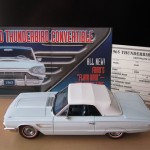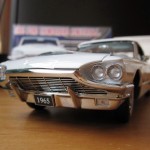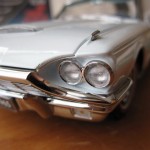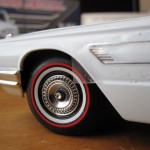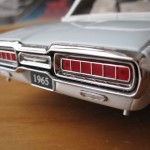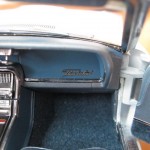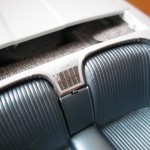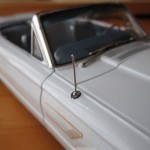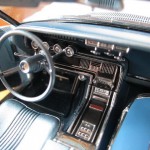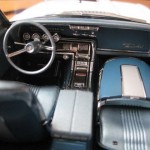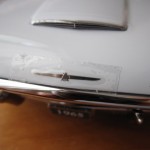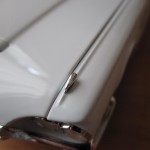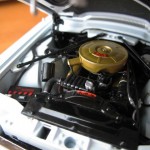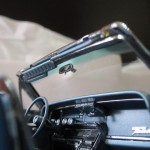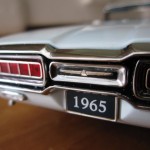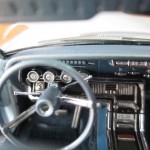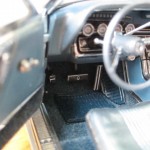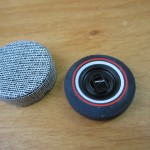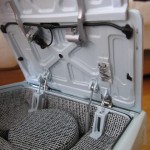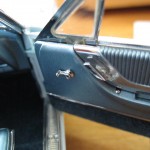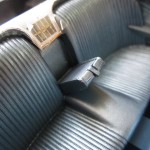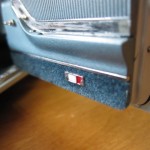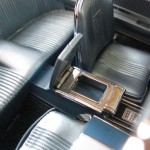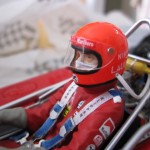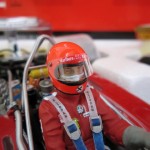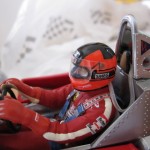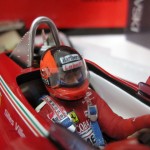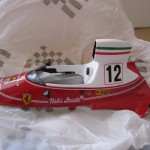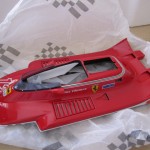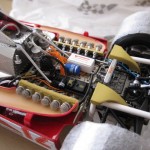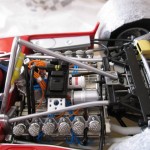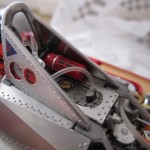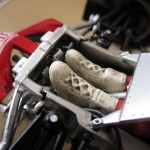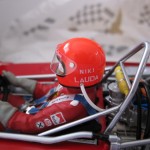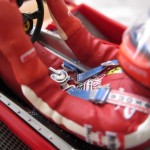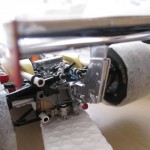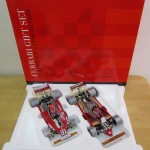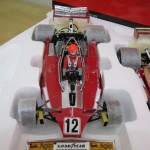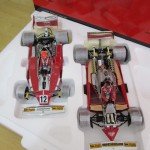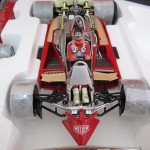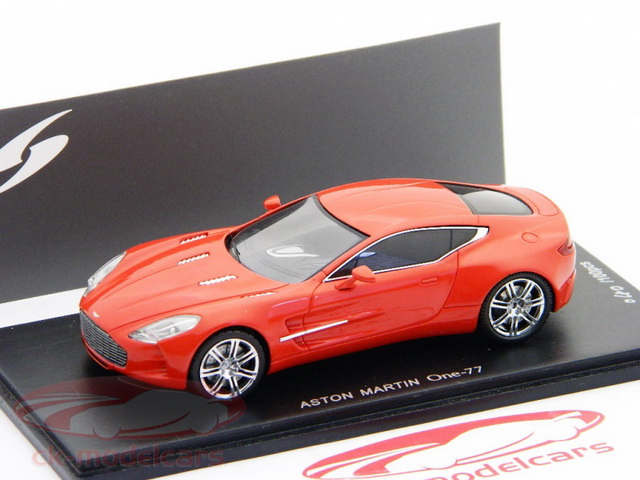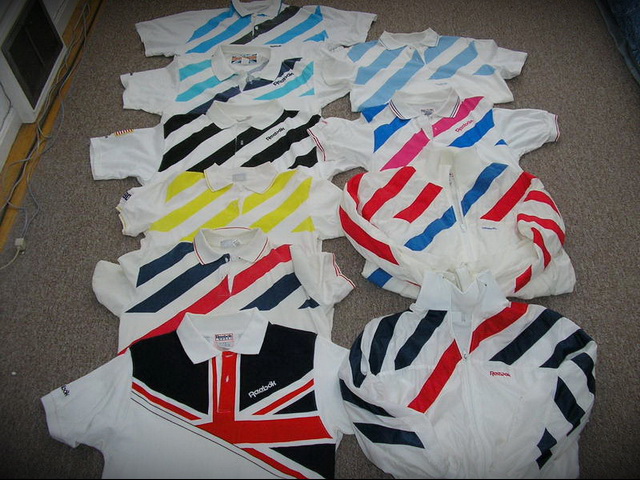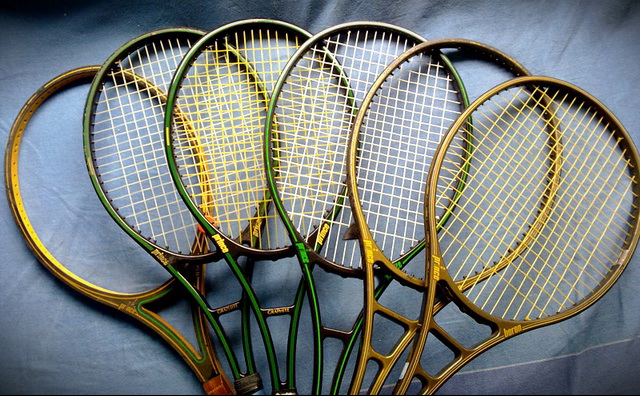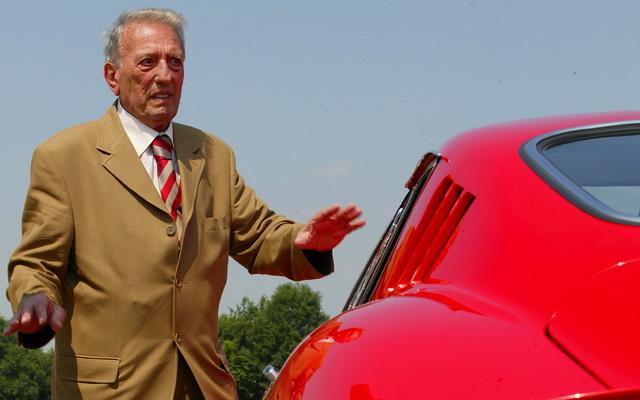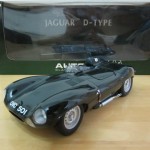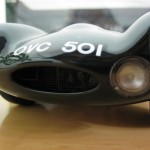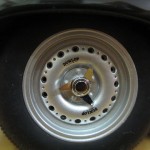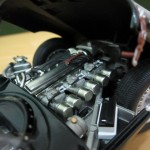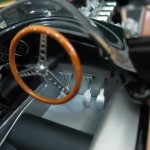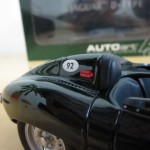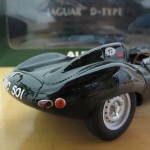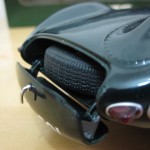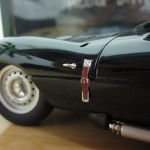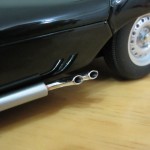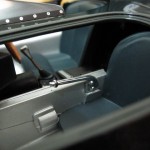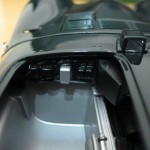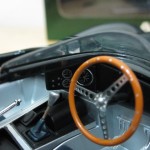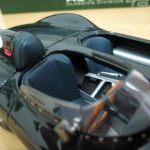原來去年11月另一位法拉利車身打造大師Sergio Scaglietti(91歲)也已經離開了人世,他就是設計1957年Testa Rossa和1962年250 GTO的那個靈魂人物。
巧合的是,他和另一位偉大的設計師Pininfarina(設計288GTO, F355, F40, P4/5, ENZO的那位)同名,大家都叫做Sergio! 難道是天意!
Sergio Scaglietti dies at 91
Legendary coachbuilder Sergio Scaglietti has passed away at 91. His Carrozzeria Scaglietti created some of the most beautiful Ferraris of the past such as the 1957 Testa Rossa and the 1962 250 GTO.
Sergio Scaglietti founded his Carrozzeria Scaglietti in 1951 and during the 1950s, the 1960s and the 1970s he worked closely with Enzo Ferrari and indelibly linked his name with the Italian carmaker, by building the body of some among the most iconic cars of all-time.
1955 Ferrari 410 Sport Spyder 1955 Ferrari 410 Sport by Scaglietti
He was known for his ability in working with aluminum, and directly sculpted his designs handbeating sheet aluminum without sketching ideas on paper.
One of his most famous creations is the Ferrari 250 Testa Rossa, built in 22 units from 1957 to 1958.
The car, known for its trademark “pontoon fenders” design, entered 19 international championship races from 1958 through 1961 emerging with 10 victories and earning legendary status among collectors.
In 2008 and 2011, a 1957 and a 1958 Ferrari 250 TR were sold for $12.1 million and $16.4 million respectively, setting new world records for classic car sales.
Many other Ferrari classic models were built by Scaglietti until the 1970s, mostly based on designs by Pinin Farina.
Sergio ScagliettiAmong these are the 250 California, 250 GTO, 250 Tour de France, the 500 Mondial and the custom Ferrari 375 MM created in 1954 for Italian movie director Roberto Rossellini and his wife Ingrid Bergman.
In 1975 Ferrari acquired “Scaglietti Works” and today the coachbuilding facility serves as the main bodyshop where Ferrari assmbles the aluminum frames and bodies of its models.
In recent years Ferrari has paid homage to Sergio Scaglietti by naming after him the 612 Scaglietti.
Ferrari Chairman Luca di Montezemolo has commented: “Today is a sad day for Ferrari. We lost a friend, a travel companion, a man who had his name forever connected to the Prancing Horse. Sergio Scaglietti leaves behind the legacy of an artist who with his talent created some of the most beautiful cars of our history. Who had the luck to know him like I did will also remember him as a straightforward and honest man, completely dedicated to his work. We will miss him.”
Short Biography
Sergio Scaglietti was born in Modena on January 9th, 1920. Since his childhood he had a passion for creating automobile: at the age of 8 he used to make toy cars using clay and wire.
In 1933, after his father’s death, he began working at a body shop.
In 1951 he founded his coachbuilding company “Carrozzeria Scaglietti”. Started as an auto body repair shop, the company – located across the road from Ferrari’s headquarters in Maranello – soon gained Enzo Ferrari’s trust and respect.
In 1959 Scaglietti started working in his studio together with sons Oscar and Claudio.
He worked as an external supplier for Ferrari until 1975, when the Italian carmaker acquired majority stakes in “Scaglietti Works” company. He retired in the mid-1980s.
Sergio Scaglietti died at his Modena home on November 20th, 2011 at the age of 91.
Mr. Scaglietti, the son of a carpenter, was regarded as the Italian automotive industry’s modern-day Michelangelo — a sculptor whose medium was metal. He was known as Ferrari’s “maestro of aluminum.”
Hammer in hand, he shaped his designs by pounding sheets of the light metal over bags of sand. Many of the classic cars he built are said to still bear lumps on the bodies from the swing of his “martello.” Blemishes to some, the imperfections often increase a car’s value, said David Gooding, president of the Gooding & Company collector car auction house.
In August, the 1957 Ferrari 250 Testa Rossa prototype that Mr. Scaglietti designed was sold at auction for $16.4 million. Known by its chassis number, 0666, the car was thought to be the most valuable ever to be sold at auction.
Mr. Scaglietti’s designs are “revered by historians and collectors as some of the most beautiful cars ever created,” Gooding said in an interview.
The Testa Rossa, Gooding said, is the “Sophia Loren of automobiles. It’s curvaceous. It’s voluptuous. It’s quintessentially Italian — wild, extreme, beautiful, of course beautiful, but also unique. It really looked like nothing else from the time.”
Compared with American cars of the day, Gooding said, the Testa Rossa was “so radical, so wild, and yet had such dramatic impact that it had tremendous influence on everything” designed since.
Sergio Scaglietti (pronounced Ska-yeh-tee) was born Jan. 9, 1920, in Modena, Italy. He was forced to drop out of school at 13 after his father died. To support his family, he went to work in a local garage, where he learned to repair by hand the bent and dented bodies of cars banged up in accidents.
It was by chance that the shop where Mr. Scaglietti worked was near the entrance to the Scuderia Ferrari factory in Maranello. Soon, Mr. Scaglietti’s handiwork was noticed by the race-car company’s imperious founder, Enzo Ferrari, who asked the young mechanic to repair a mud flap.
That seemingly trivial test led to more Ferrari assignments for Mr. Scaglietti, who opened in 1951 his own custom coach-building business, Carrozzeria Scaglietti.
Shunning pencil and paper, Mr. Scaglietti worked out his designs in his head and with his hammer.
In 1954, Mr. Scaglietti was commissioned by Italian movie director Roberto Rossellini to design a custom Ferrari 375 MM for his then-wife, actress Ingrid Bergman.
Mr. Scaglietti’s other well-known Ferraris include the 250 GTO, of which only 36 are said to exist, the 500 Mondial and the California Spyder.
His repertoire “embodied not just Ferrari beauty, but extreme beauty,” Leslie Kendall, curator of the Petersen Automotive Museum in Los Angeles, said in an interview.
“They weren’t just low slung, they were impossibly low slung. They weren’t just sexy,” he said, “they were impossibly sexy.”
Some of Mr. Scaglietti’s design had value beyond aesthetics. His famously bulging “pontoon” fenders on the Testa Rossa, for example, helped cool the car’s drum brakes.
How the Testa Rossa accidentally got its name was a tale of Ferrari lore that Mr. Scaglietti enjoyed telling.
As he explained to the Allentown (Pa.) Morning Call in 2000, the company’s chief of production told Enzo Ferrari that the company had to stop building the proposed car because it had run out of black paint to coat the engines’s cam shaft covers.
“Enzo asked, ‘What color do we have?’ ” Mr. Scaglietti said. “The chief of production said ‘red.’ Ferrari said, ‘Paint the engines red, and we’ll call it the Testa Rossa’ ” — red head, in Italian.
Mr. Scaglietti sold his business to Ferrari in the 1970s and retired in the mid-1980s. In 2004, Ferrari named in his honor its four-seater sports car, the 612 Scaglietti.
A list of Mr. Scaglietti’s survivors could not be determined.
Mr. Scaglietti’s clients for his high-end vehicles included many of the world’s richest people, including royalty.
In 2004, the London Mail on Sunday reported that members of European aristocracy had once given Mr. Scaglietti two precious racing pigeons.
Mr. Scaglietti, apparently unaware of the birds’ competitive qualifications, inquired how best they should be prepared for eating.
